Shrimp farming expert extols the virtues of multi-stakeholder collaboration and incentivizing innovation at the farm level
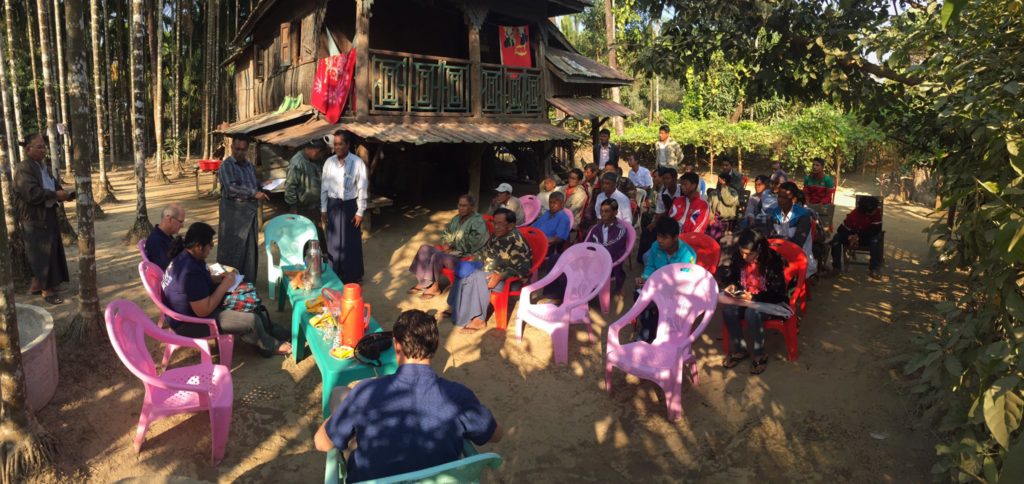
For much of the last decade, Corey Peet has sought to improve shrimp-farming practices in Southeast Asia while working for the Monterey Bay Aquarium, BlueYou Consulting and independently as the founder of Postelsia.
A recent project he’s hopeful for is the formation of SEASAIP (the Southeast Asian Shrimp Aquaculture Improvement Protocol), which aims to adapt sustainability programs created in other markets for producers in the region. Its goal is “better reconciliation between the desires of the marketplace and the realities facing producers on the ground.” These often-opposing forces, Peet says, can be strong.
The program, overseen by the Asian Seafood Improvement Collaborative (ASIC), of which Peet is a co-founder, is a draft tool to foster supply-chain partnerships to drive better environmental performance on shrimp farms, champion innovation and ultimately get producers to – at minimum – meet the criteria for a yellow (good alternative) ranking from Seafood Watch.
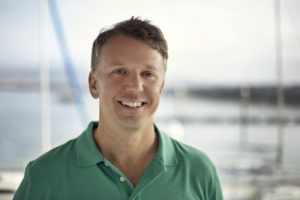
Shortly after returning from a trip to Myanmar this spring, Peet – who once lived in Thailand – discussed the work of convening multiple stakeholders in Southeast Asia, the role of certification and the dynamics of sustainability challenges confronting marketplace demands.
What is the most common shrimp-farming mistake being made in the places you visit?
That depends on your definition of “mistake.” The most common, needed improvement that I’ve noticed is documentation of what they’re doing. That data piece is done in places like Thailand, where there’s intensive vannamei [production], and it takes a lot of skill. As you go down to smaller farms, predictably, you get less and less data collection. Everyone knows the challenge of small farms, and for groups, the extensive documentation requirements.
I also want to say it’s often about how water is used. I’m not as concerned about production techniques, or growing shrimp faster and making more profits. I’m looking more at the other side of it – I look at it from an environmental impact point of view. I can tell farmers what they need to do to score better [on certification audits].
What is the most concise definition of an Aquaculture Improvement Project (AIP), one that a corporate procurement policy can support?
For me, the most obvious answer is an AIP should be a collaboration across the supply chain around a specific, agreed-upon goal. It’s what SEASAIP is trying to be. What we’ve seen is a lot of top-down forcing of change, like, “We have a procurement policy, now producers need to [comply with] it.” In a lot of cases, the producer complies, and pays [for the improvement work], but it doesn’t get them a guaranteed contract or a price premium.
It’s dangerous to assume that the way business is done is congruent with sustainability. We need to consider that piece as well and be open to doing things differently to make sure the benefits are realized across the supply chain, not just those that are able to speculate the best. We need to think about AIPs as collaborative projects. Many FIPs are like that. Some AIPs are too. But it needs to be more about bringing everyone together.
It’s irresponsible to worry only about the things we want to eat. We need to make sure we have the tools and the knowledge to help other fisheries improve so they foster food security.
What’s also happening, in some cases, is that people don’t realize the depth of these AIPs. They’re like rabbit holes; there’s multiple layers that are easily underestimated. Take small farms in Vietnam, for example. You can ask the farmers what markets they sell their product to – they often don’t really know what processor it goes to. There are brokers, middlemen. And the processor can have processor brokers, farmers’ cooperatives, and debt relationships involved.
For very large farms, that’s probably very different. This is a huge part of the challenge with sustainability. And for groups of farms, there is a move toward zone compliance, and a farm has to fit into it. It’s all very difficult, but it also makes it interesting.
It is often said that the goal of an AIP (or a FIP) is not necessarily third-party certification. What is the goal of an AIP if greater marketplace access or a higher price is not the carrot?
For starters, certification exists for western markets. We can argue that. And that’s great – we want to make sure we’re responsible. What’s been missed, however, is that there’s value in improvement for improvement’s sake. It’s irresponsible to worry only about the things we want to eat. We need to make sure we have the tools and the knowledge to help other fisheries improve so they foster food security. It’s very important. I’m often surprised to see that it’s not part of the equation.
With the opportunity I’ve had to work in Southeast Asia, I saw these holes in communicating, about improvement for food-security benefits. We should care just as much about the food we want to eat as the food that others want to eat. As the middle class is growing the value of those markets, once they get bigger, will be better for producers, on a price-per-unit basis.
In other words, a lot of the sustainable seafood movement has been built off the leverage that western markets have but the question is how long is that really going to last as the growth in Asia makes it less and less likely that it will be the main driver over the long term. This is why finding ways to line up seafood production with impact investment is critical to explore at this point.
Are improvement projects only for “small-scale” producers?
They’re not only for small producers. They are the ones to work with over the long term but you have no choice but to start with larger, more integrated producers. If you start with small-scale producers, given the traceability challenges, and individual compliance points, it’s risky for a program like SEASAIP. For SEASAIP, we are working with small producers but they will take more time to develop and the first SEASAIP Verified products will be more integrated producers.
Who is truly driving small-scale farmers to adopt better practices? Retailers? Processors? NGOs? Themselves?
I would say that, at the moment, there is not one source that’s driving improvement. I definitely think that the AIP world is still very much an experiment. There are only a few good examples of success. And that’s not a criticism; it’s just too early. It’s true that in some cases – in a lot of cases – farmers have no idea about certification. But it’s changing more and more.
It’s difficult to see who will end up driving this. In our projects, again, the weirdness of what we do, it didn’t start with a long-term vision. It was always simply about the next step and seeing who comes to the table. The stakeholders keep coming back and we keep going forward.
Can certification schemes say, today, that there is a strong business case for certification? In other words, if certified, a farm is not only farming sustainably but is also running a sustainable business?
I don’t think we have that data yet. If I’m being really honest, the challenge is that the certification schemes are still underperforming, both in terms of how they’re audited and the value that they are offering in terms of recognizing performance what the standard says versus what the audit says. Have you ever heard anyone critical of any certification bodies for doing bad work? It comes back to the standard holder. That’s one problem.
In other cases, the standards have been, at the beginning or later, moved to a level where they’re certifying minimal responsibility, and not driving innovation. They’re not pushing [producers] out of their comfort zone. It’s not all on the farmer – the supply chain needs to do it for them. Certification has improved things, to some degree, but not enough for a farmer to say, “It’s significantly lowered my risk of disease.”
I go back to examples that were true when I started in Thailand in 2010. I visited about 40 to 50 farms in 10 months. Many were certified, and many would tell me that [certification] made me a better farmer, but I didn’t get anything for it. There’s an opportunity that’s missed there. Certification is putting the onus on them to improve only when it’s the entire supply chain and the incentives contained within it that needs to improve.
And I will say this of the recent slavery coverage, which is real and true: There was too much shaming of the buyers and the producers. To me, everybody who participates in that supply chain is at fault, including consumers. Don’t call out the guilty parties – anyone who’s bought cheap shrimp is part of that problem.
In lieu of a certification stamp, how do producers engaged in AIPs give assurances to buyers? Is the onus on groups like Sustainable Fisheries Partnership to provide that proof?
We have limited opportunities for acceptable product. With certification, it’s pass or fail – you can’t buy until you pass. With Seafood Watch, it’s yellow or it’s green and there is an opportunity to have a starting point that allows some performance to be recognized and then build the relationship with the right buyer partner to then increase performance. It’s an important point. We need to realize that driving performance will take partnerships and is not the responsibility of one party in the supply chain. They are simply too complex, especially for small farmers, for that idea to really work.
Tell me about your work with Asian Seafood Improvement Collaborative (ASIC) what its goals are.
SEASAIP and the improvement protocol came out of a USAID project. In June 2015, it didn’t have a home. We could have let it die but we didn’t. At some point, we realized we needed the funding under one umbrella, so ASIC was born. The goal is to establish it as an NGO in Singapore with the proposed chairman being Mr. Peter Woon. It’s very much a start-up; it’s been bootstrapped to the max. We are getting somewhere on the SEASAIP side and also with the fisheries project. Progress has been slow to date but we might be starting to turn a corner.
Officially, when it goes down I’ll be the vice chair. We’re waiting for someone to be the first buyer for SEASAIP as this would be a bit of a proof-of-concept for the project. What we do have is strong stakeholder engagement. The SEASAIP Steering Committee now has 18 members, including 15 voting members and we three non-voting members: Seafood Watch, Blue Apron as a buyer, and FairAgora Asia. And we vote by consensus, or it’s nothing.
It’s an opportunity for Asian producers to have a voice and participate more in the global debate. It’s also a platform to foster opportunities for collaborations and we hope to help technology companies gain access to producers, as one of the big challenges in the aquaculture industry is the lack of technology. There’s a big technological leap to go from no data collection to automated data collection, but I believe this is what we need to have. It’s the same type of leap that was made when many in Asia went from having no phones to cell phones.
What are your impressions of the F3 contest and the larger picture of alternative feed ingredients? Is aquafeed the area where the most innovation is occurring?
It’s certainly one of the areas that’s the most obvious for innovation to happen. There’s such an economic incentive to move away from fishmeal and fish oil, if it can be done. And there are some interesting companies involved, particularly the insect-based stuff. There are some companies in Vietnam that try to grow insects off of food waste, which is solving two problems at once. My only thing is it’s not the only area we need innovation in – think about how we record data and help farmers improve. For a lot of what is generally true, the information [producers] get is from people trying to sell, and is not always objective information.
And in places like Indonesia, there’s often just one salinity meter for 50 farmers. So they’re measuring salinity maybe once month, if they’re lucky. Creating efficiencies – that’s the future.
It can be difficult to sway people who oppose aquaculture into a more positive, accepting mindset. What are some of misperceptions you run across, and how do you engage with people who express negative sentiments toward aquaculture?
For me, the first step is to be honest about what’s true and what’s not. There have been significant impacts from shrimp and salmon aquaculture. Those are real. But not everything that’s been said is. It’s important to acknowledge that there is slavery in some supply chains; that there’s sea lice on salmon farms that have affected wild salmon. But to say that aquaculture as a whole is bad is simply inaccurate. It’s not a new technology – it’s been around for thousands of years.
Obviously, the pendulum did swing too far to the negative. And for full transparency, I was certainly a part of that. I’m not necessarily sorry for that, but I do want to be part of it swaying the other way as well. Proponents of aquaculture will say it will save you and the planet; there’s a little too much zest behind that. Excitement clouds judgement sometimes. If we had more measured approach, we’d be further along.
You write on your website that the name of your consultancy, Postelsia, a species of seaweed, serves as a “metaphor of the challenge of sustainability and a reminder of the depth of the challenge that the human species faces as we attempt to reconcile our desired realities within the biological realities of the planet.” How strong are those opposing forces?
I think they’re pretty strong. One thing that we’re really not good at as humans is being honest when it comes to money and what it costs us or others – or the planet – to make money. That’s a really strong force that some people don’t want to reconcile – it’s a conversation that hasn’t really been had so well in the sustainable seafood movement. The reality, at this time, is that we have a fundamental global equity problem. The West has way more than the rest of the world and that plays out in the seafood world. And until we can really be honest about that, it’s a tough problem. Does it mean it’s unsolvable? No, I don’t think so, it’s just a matter of understanding the depth of the problem and being willing to be honest about that and coming to the table to find real solutions that benefit more than just one party. Strong forces for sure.
Your metaphor could also describe the middle ground of push and pull between NGOs, industry and the marketplace. Are those sides as close as they can get today, or is there the opportunity for further alignment?
I think they’re very close, particularly in North America. But the question is, how does that closeness play out in the places where most of the seafood is produced? That’s where there’s a need for people from both of those communities to roll up their sleeves and really see what’s going on. Until we spend more of our time getting over to Africa and Asia and South America and really understanding the depths of these problems, there will be more work to do.
Seafood Summits are great events, but you often walk away from those wondering, well, what’s the solution? There’s no question that the people who started it and who run it deserve a lot of credit – it is the premier event – but I’m thinking we need to spend more time in these places where the challenges are severe and less time sitting around tables in North America. I have found that people for the most part are very welcoming and they are interested in learning how to get better but they also want to be listened to and have the opportunity to be part of the solution.
Now that you've reached the end of the article ...
… please consider supporting GSA’s mission to advance responsible seafood practices through education, advocacy and third-party assurances. The Advocate aims to document the evolution of responsible seafood practices and share the expansive knowledge of our vast network of contributors.
By becoming a Global Seafood Alliance member, you’re ensuring that all of the pre-competitive work we do through member benefits, resources and events can continue. Individual membership costs just $50 a year.
Not a GSA member? Join us.
Author
-
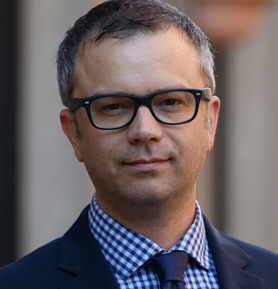
James Wright
Editorial Manager
Global Aquaculture Alliance
Portsmouth, NH, USA[103,114,111,46,101,99,110,97,105,108,108,97,101,114,117,116,108,117,99,97,117,113,97,64,116,104,103,105,114,119,46,115,101,109,97,106]
Tagged With
Related Posts
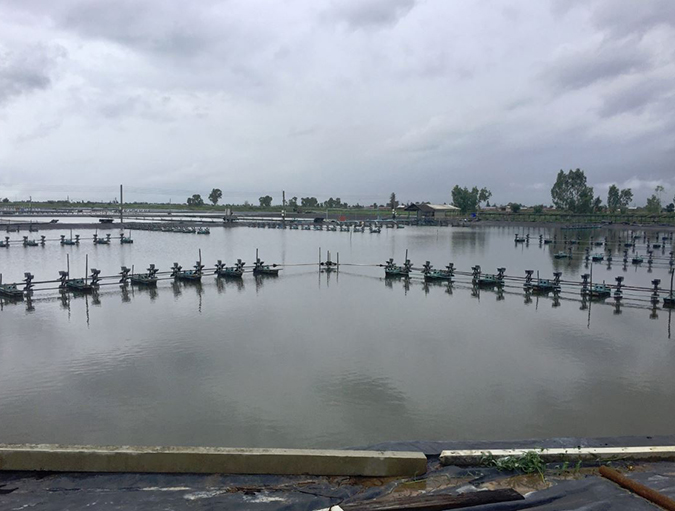
Health & Welfare
Aquamimicry: A revolutionary concept for shrimp farming
Aquamimicry simulates natural, estuarine production conditions by creating zooplankton blooms as supplemental nutrition to the cultured shrimp, and beneficial bacteria to maintain water quality. Better-quality shrimp can be produced at lower cost and in a more sustainable manner.
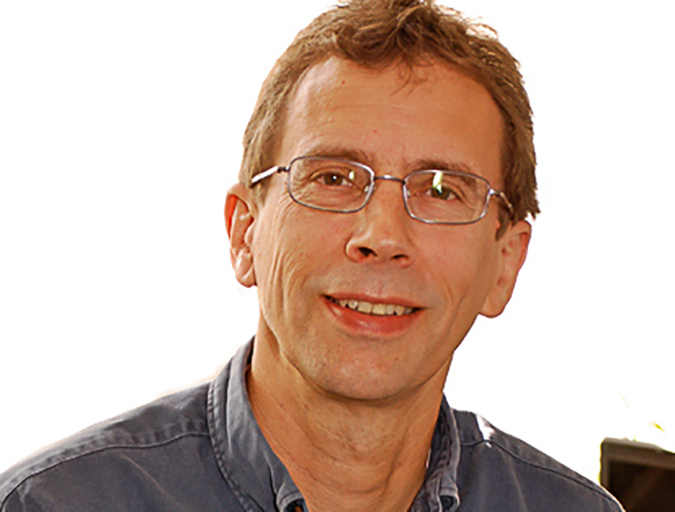
Innovation & Investment
Aquaculture Exchange: David Little, University of Stirling
David Little, professor at the University of Stirling in Scotland, tells the Advocate about the rapid evolution of the aquaculture industry in Southeast Asia — where he made his home for many years — and discusses the role of academia in ushering in new eras of innovation.
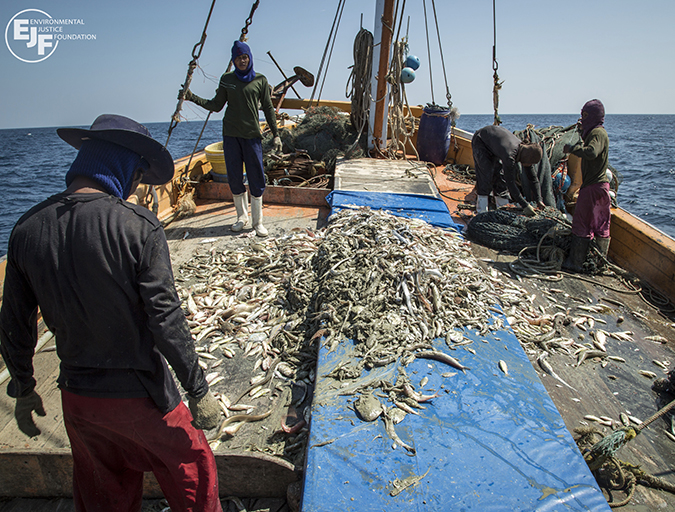
Responsibility
Intelligence, integrity in the fight against forced labor in seafood
In previewing the SeaWeb Seafood Summit, the Advocate examines human rights in the supply chain and the people who advance solutions in rooting out worker abuses. In part one of a three-part series, Environmental Justice Foundation co-founder Steve Trent talks about linking environmental security with human rights.
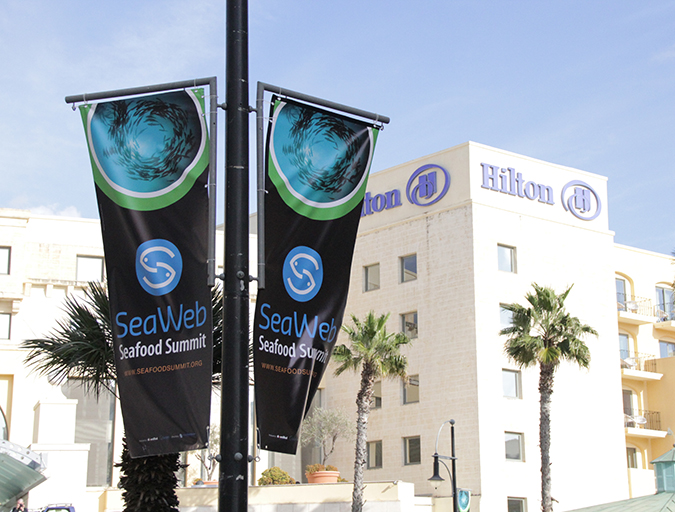
Responsibility
GSSI furthers its mission of clarity out of confusion
The Global Sustainable Seafood Initiative aims to set the bar for certification schemes. Board members of the task force formed in 2012 convened at the SeaWeb Seafood Summit in Malta to reinforce the mission and brief attendees on progress.


